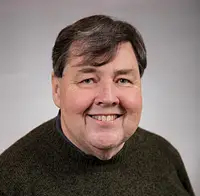There’s no question that a prescription drug epidemic exists in the US today. In fact, the top five most prescribed drugs for pain relief alone totaled over 198 million prescriptions in just one year. That’s enough prescriptions for over half the people in the US to get one each. Dive in and discover the opioid painkillers that doctors prescribe most to their patients.
Vicodin — 127,859,000 Prescriptions Annually
Vicodin first hit the shelves in 1978. Originally, physicians prescribed this drug so often because it was one of the few Schedule III opioids. This made it much easier for them to write prescriptions for it and for people to easily obtain it at their pharmacies. In addition to hydrocodone, this pill also contains acetaminophen (the active ingredient in Tylenol).
This drug is great for pain relief due to the combination of ingredients but is also highly addictive. As one of the most prescribed drugs for pain relief, it has strongly contributed to the opioid epidemic.
Percocet — 32,962,000 Prescriptions Annually
Similar to Vicodin, Percocet also contains an opioid and acetaminophen. However, the opioid in Percocet is oxycodone rather than hydrocodone. This opioid formulation is stronger than hydrocodone, which put it in the Schedule II drug category from the get-go. The main difference between Percocet and Vicodin is that Percocet is stronger. In fact, physicians often prescribe it to cancer patients or those who need long-term pain management.
For most people, though, using Percocet long-term just leads to addiction. Unfortunately, the only way to overcome this dependence is to attend prescription drug addiction rehab. Those who are taking Percocet for acute pain shouldn’t take it for more than a couple of weeks, in most cases.
OxyContin — 16,440,000 Prescriptions Annually
OxyContin is one of the most famous opioid drugs. The big pharma company, Purdue Pharma, released the drug in the early 1990s as the first long-release opioid pain reliever. While it did last longer than other opioid pills, it didn’t last as long as the company proclaimed.
As a result, thousands of people who were using this drug began taking it more often than they were supposed to. Doctors also began prescribing higher doses. This resulted in addiction for many, many people, and is often considered the catalyst for the opioid epidemic.
Codeine — 11,225,000 Prescriptions Annually
Doctors may prescribe codeine for a couple of different reasons. It’s the main ingredient in prescription strength cough medications and also works well for pain. Today, many people abuse this drug by mixing it with soda and hard candy to form a cocktail. A few different names for this opiate cocktail include:
- Sizzurp
- Sippin’ Syrup
- Lean
- Purple Drank
No matter what name it goes by, this combination can be lethal, especially if you don’t know the dose of codeine that goes into it.
Morphine — 9,658,000 Prescriptions Annually
The fifth most prescribed drug for pain in the US is morphine. This drug is a fairly pure form of the opium plant. Often, doctors give this to patients directly following a surgical procedure or bad accident. It’s a potent drug that quickly relieves pain. Like most opioid drugs, though, prolonged use of morphine can cause you develop an addiction.
What to Do if You’re Addicted to One of The Most Prescribed Drugs for Pain
If you or a loved one has an addiction to any of the drugs above, it’s imperative to seek help. You can get the addiction treatment programs you need at Crestview Recovery in Portland, OR. We offer a number of substance use treatments to help you end your opioid addiction, including:
To learn more about our therapies and services at our painkiller addiction rehab, contact us today at 866.262.0531. You can live a healthier life, free from opioid painkillers.

Since 2016, Dr. Merle Williamson, a graduate of Oregon Health Sciences University, has been the Medical Director at Crestview Recovery, bringing a rich background in addiction medicine from his time at Hazelden Treatment Center. He oversees outpatient drug and alcohol treatments, providing medical care, setting policies, detox protocols, and quality assurance measures. Before specializing in addiction medicine, he spent 25 years in anesthesiology, serving as Chair of Hospital Pharmacy and Therapeutics Committee and Chief of Anesthesia at Kaiser Permanente. This experience gives him a unique perspective on treating prescription drug addiction.






